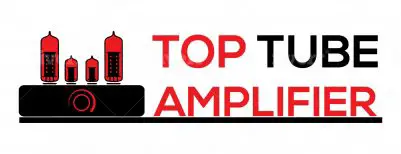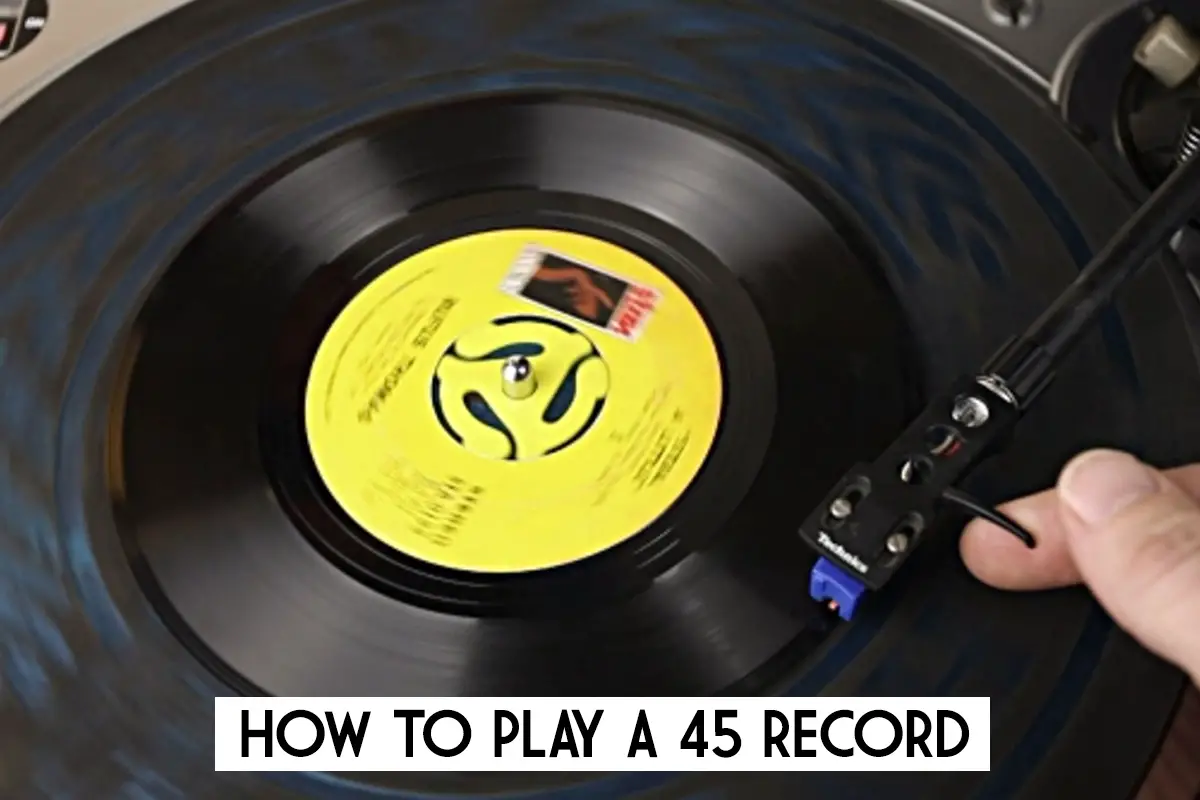A 45 record is a vinyl disc that contains one song on each side. It was the standard of music distribution from the 1940s through the 1980s, and has been making a comeback in recent years.
However, playing a 45 record may be much more difficult than you think it would be. And even if you are able to successfully play it on your turntable or record player, there’s still another issue: where do you put flip-flops? (The answer to this question will not be provided.) If you want to learn how to properly play a 45 Record on your turntable or record player this article can help!
What Types Of Vinyl Records Are There?
Vinyl records come in many formats. In fact, there are dozens of different vinyl records. This article is going to focus on playing a 45 record only because it is the easiest type to play, and one that everyone can do. Other types of vinyl records include:
- EPs (Extended Play) – An EP contains 3 or 4 songs in 6-10 minutes.
- LPs (Long Play) – An LP contains 5-20 songs (or more!) per side in 20-45 minutes. If you’ve got enough time to listen to several albums this may be your best recording choice!
- 12”s/1X Vinyls – These contain 1 song per side rather than 2 as with a 45 record, and they also have a different spin speed.
- 78s – These are the old format, and are similar to LPs except that there is less space devoted to each song.
What’s the difference between 33, 45 and 78 records?

The 33s were introduced to be the successor to the 78 RPM records. The major difference between the two formats is that a 33 RPM record could contain up to 20 minutes of music per side, while a 78 records only has a space for 5-10 minutes per side. A 33 record is twice as fast as a 78, and produces a much louder sound. However, they do have their flaws: 33 RPM records often suffer from increased wear-and-tear leading to skips in music. Due to this, the popularity of the 33s waned in favor of the slower 78 rpm format that was quieter and lasted longer.
The 45 was introduced in 1949 as a seven inch vinyl record, and it became the standard for the music industry. A 45 could contain up to 2 minutes of music per side. The 45 format had its own flaws such as shorter songs, no room to include liner notes, and higher likelihood at skipping. These issues eventually led to the phasing out of the 45 format by 1978. However, they have made their return since 2006!
How To Play 45 Records
The first thing you want to do is get a record player that has an automatic function. This will prevent your hand from ever having to touch the disc itself once it’s on there! Also, make sure you have some 45s ready to play on your automatic turntable.
Once everything is set up properly as described above, place the needle (a small object used for scratching) on top of the dead center point between both sides of the vinyl disc. Then simply let the record play completely through with no interruptions! It’s really that simple.
However, there are a few more things to note:
Here’s a tip that can help prevent skipping and other problems such as unwanted noise from occurring. When placing the needle on top of a record in order to let it play you need to hold back the middle portion of one side of the disc slightly while keeping your other hand underneath. This will stop unnecessary vibrations which may harm your recording!
45 Record Adapter

Some turntables require you to purchase an adapter in order for the 45 record to fit properly on it. This is very easy to do, but make sure that if you’re buying a new turntable you go ahead and get one with the adapter built into it rather than having to purchase one separately later on.
If this is your first time playing a vinyl record or even just your first time using an automatic player, don’t be disappointed if something goes wrong! Think of it as part of the learning process; much like how some people take piano lessons and often play wrong notes early on. Nobody is perfect, so there’s really no reason why you can’t learn from your mistakes and improve over time!
How To Tell If A 45 Record Is Scratched
Before buying a record, you should always inspect it for any signs of damage. If there are some scratches or other imperfections that keep your needle from going down and picking up the sound, then don’t buy that disc! Also, avoid records if you notice that they’re all sticky and dirty sitting in a dusty old bin at the local thrift shop; chances are those grimy discs probably also have some annoying scratches on them too! You may want to investigate cleaning them yourself before using them; otherwise the music could be very choppy and hard to listen to.
If you do find that your newly purchased LP has scratches on it, here is an easy method which can help to reduce unwanted noise:
Get a pencil and some felt. Yes, a normal ol’ #2 pencil will do! Now draw one straight line across the damaged area of your record. Then get some nice soft fabric (like an old t-shirt) and rub it back and forth over that pencil line. That should remove any excess dust or grime so your vinyl can play as if nothing was ever wrong with it in the first place!
When To Clean Your Records
Since records are made of a very soft plastic material, they’re more prone to getting dirty and damaged than CDs or other mediums of music. Since most people like to keep their vinyls looking clean and shiny, there is quite a bit of debate as to how often you should clean them.
For example, you may want your record to play as clearly as possible without unnecessary noise when in the middle of an intense listening session; however sometimes it’s fine for some basic sound distortion so that you can continue the party! If everybody at the house wants to have a good time while listening, then the sound quality doesn’t really matter too much since there will be plenty simultaneous conversations going on about different topics regardless…however if you are sitting there alone in your room listening to things intently, then you may want your records to be as clean and crisp as possible!
Conclusion
If you want to keep your records sounding as pristine as possible for the longest amount of time, then you definitely want to learn how to properly clean them between every single use. This is especially important because after each playing session the needle from your turntable comes into contact with all different kinds
Now that you know how to play a 45 record, gather up your records and get started! Whether you have one or all of your favorite artists’ work in this format, vinyl records are making their return into the music world for good! Are you going to be creating your own collection? Or will you stick with CDs and MP3s? Let us know what you think below in our comments section.

